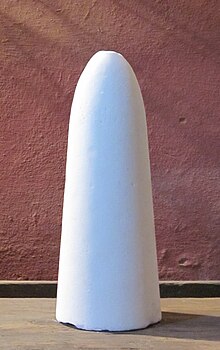– History:
– Earliest record in 12th century Jordan
– Sugarloaf reference in 9th century Arabic text
– Sugarloaf production in Europe from 1470 onwards
– British government’s punitive taxes on colonial producers
– Significance of sugarloaf as a grocer’s symbol
– Process:
– Raw sugar refinement through boiling and filtering
– Pouring refined sugar into conical molds
– Application of white clay or loaf sugar solution for whitening
– Drying, shaping, and wrapping of sugarloaves
– Usage of blue paper for packaging sugarloaves
– Grades:
– Variation in sugarloaf sizes based on molds
– Price determination based on sugar grade
– Quality degradation in subsequent sugar boilings
– Use of larger molds for lower-grade sugars
– Production of lowest-grade sugar from filtration scums
– Contemporary availability:
– Sugarloaves produced as specialty items
– Common in Germany for Christmas drink Feuerzangenbowle
– Superseded by granulated and cube sugar in most regions
– See also:
– Other sugar-related products like Jaggery and Panela
– Reference to Chinese slab brown sugar and sugar candy
– Mention of mountains named Sugarloaf
– Introduction to Feuerzangenbowle
– Reference to historical sources and books on sugar’s history
A sugarloaf was the usual form in which refined sugar was produced and sold until the late 19th century, when granulated and cube sugars were introduced. A tall cone with a rounded top was the end product of a process in which dark molasses, a rich raw sugar that was imported from sugar-growing regions such as the Caribbean and Brazil, was refined into white sugar.

